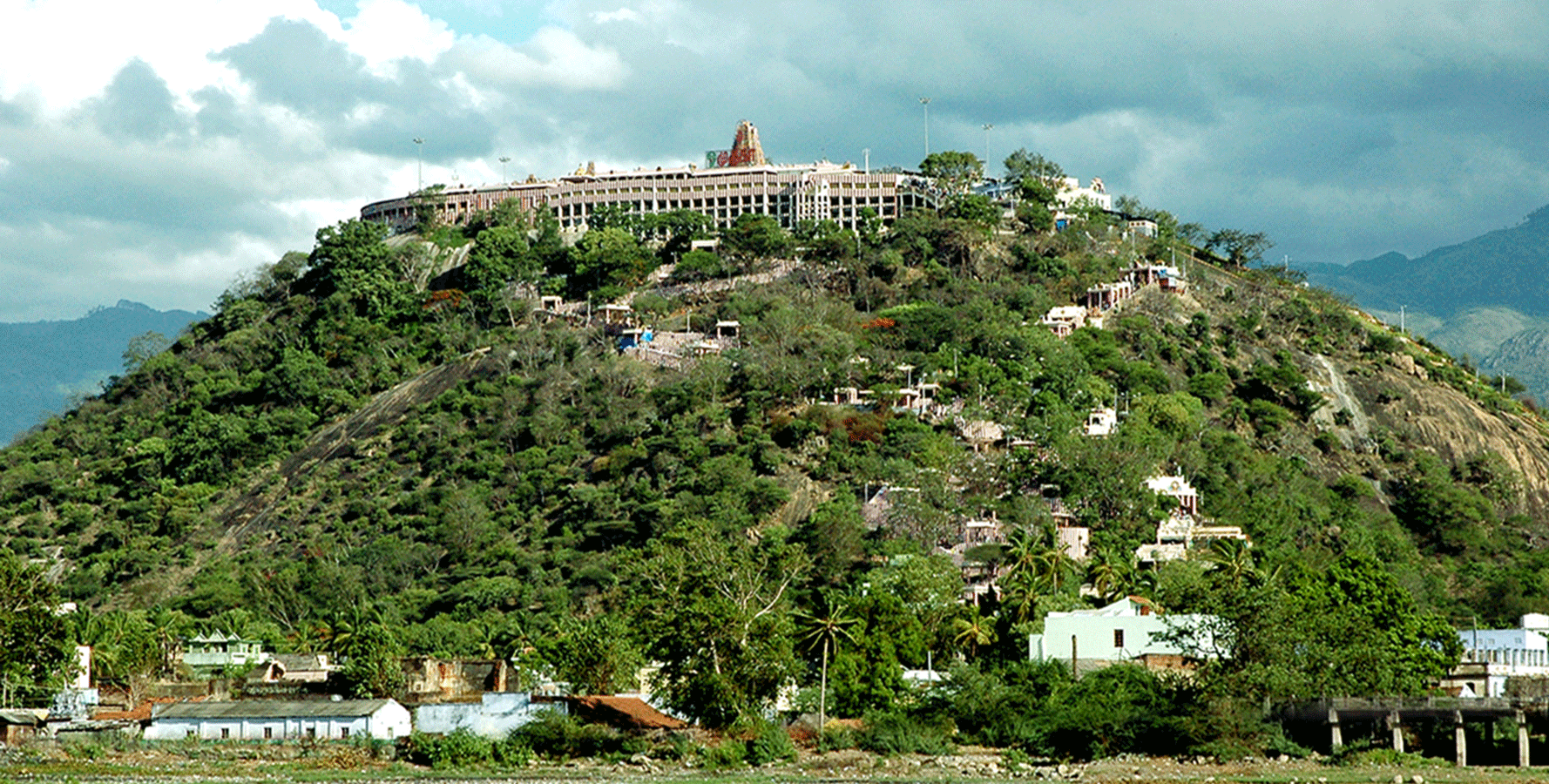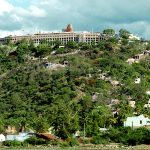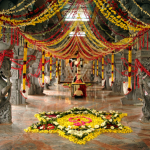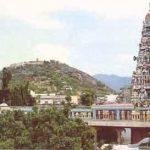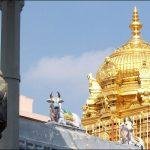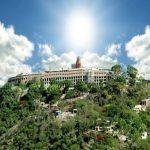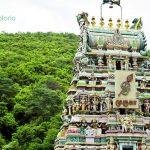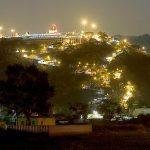Palani Murugan temple, Dindigul, Tamil Nadu
| Date built: | – |
|---|---|
| Deity: | – |
| Architectural style: | Dravidian architecture |
| Major festivals | – |
| Locale: | Palani |
| District:: | Dindigul |
| Address: | Giri Veethi, Palani, Tamil Nadu 624601 |
| Phone | 04545242236 |
Palani Arulmigu Shri Dhandayuthapani temple is one of the Six Abodes of Murugan. It is located in the town of Palani in Dindigul district, 100 kilometres (62 mi) southeast of Coimbatore and northwest of Madurai in the foot-hills of the Palani hills, Tamil Nadu, India. Palani temple is considered synonymous with Panchamritam, a sweet mixture made of five ingredients.
As per Hindu legendary beliefs, Sage Narada visited the celestial court of Shiva at Mount Kailash to present to him a fruit, the gnana-palam (literally, the fruit of knowledge). He decided to award it to whichever of his two sons who first encircle the world thrice. Accepting the challenge, Murugan([Karthikeya]) started his journey around the globe on his mount peacock. However, Ganesha, who surmised that the world was no more than his parents Shiva and Shakti combined, circumambulated them and won the fruit. Murugan was furious and felt the need to get matured from boyhood and hence chose to remain as a hermit in Palani . The idol of the Muruga in Palani was created and consecrated by sage Bogar, one of Hinduism’s eighteen great siddhaas, out of an amalgam of nine poisons or navapashanam.
Other than the steps and sliding elephant way, there is a winch and rope car service used for transportation of devotees uphill. Six poojas are performed from 6.00 a.m. to 8.00 p.m and special poojas on festival days in the temple, when it is open from 4.30 a.m. As of 2016, the temple was the richest among temples in the state with a collection of 33 crore during the period of July 2015 to June 2016.
Architecture
The idol of the deity is said to be made of an amalgam of nine poisonous substances which forms an eternal medicine when mixed in a certain ratio. It is placed upon a pedestal of stone, with an archway framing it and represents the god Subrahmanya in the form He assumed at Palani – that of a very young recluse, shorn of his locks and all his finery, dressed in no more than a loincloth and armed only with a staff, the dhandam, as befits a monk.
The temple was re-consecrated by the Cheras, whose dominions lay to the west, and the guardian of whose eastern frontier was supposed to be the Kartikeya of Palani. Housed in the garbhagriham, the sanctum sanctorum, of the temple, the deity may be approached and handled only by the temple’s priests, who are members of the Gurukkal community of Palani, and hold hereditary rights of sacerdotal worship at the temple. Other devotees are permitted to come up to the sanctum, while the priests’ assistants, normally of the Pandāramcommunity, are allowed up to the ante-chamber of the sanctum sanctorum.
The temple is situated upon the higher of the two hills of Palani, known as the Sivagiri. Traditionally, access to it was by the main staircase cut into the hill-side or by the yanai-padhai or elephant’s path, used by the ceremonial elephants. Pilgrims bearing water for the ritual bathing of the idol, and the priests, would use another way also carved into the hill-side but on the opposite side. Over the past half-century, three funicular railway tracks have been laid up the hill for the convenience of the pilgrims, and supplemented by a rope-way within the past decade. There are two modes of transport from the foothills to uphill. There is a winch, which operate from 6 a.m. on ordinary days and 4 a.m. during festive occasions. There is another rope car which operates from 7 a.m. to 12:30 p.m. and 1:30 p.m. to 5 p.m. Both winch and the rope car are closed after the Irakkala Pooja at 8 p.m.The sanctum of the temple is of early Chera architecture while the covered ambulatory that runs around it bears unmistakable traces of Pandya influence, especially in the form of the two fishes, the Pandyan royal insignia. The walls of the sanctum bear extensive inscriptions in the old Tamil script. Surmounting the sanctum, is a gopuram of gold, with numerous sculptures of the presiding deity, Kartikeya, and gods and goddesses attendant upon him. In the first inner prahāram, or ambulatory, around the heart of the temple, are two minor shrines, one each, to Shiva and Parvati, besides one to the sage Bhogar who is by legend credited with the creation and consecration of the chief idol. In the second precinct, is a celebrated shrine of Ganapati, besides the carriage-house of the Muruga’s Golden Chariot.
Legend / Local stories
Sage Narada once visited the celestial court of Shiva at Mount Kailash to present to him a fruit, the gyana-palam (literally, the fruit of knowledge), that held in it the elixir of wisdom. Upon Shiva expressing his intention of dividing the fruit between his two sons, Ganesha and Murugan,the sage counseled against cutting it. He decided to award it to whichever of his two sons first circled the world thrice. Accepting the challenge, Karthikeya started his journey around the globe on his mount peacock. However, Ganesha, who surmised that the world was no more than his parents Shiva and Shakticombined, circumambulated them. Pleased with their son’s discernment, Shiva awarded the fruit to Ganesha. When Kartikeya returned, he was furious to learn that his efforts had been in vain. He left Kailash and took up his abode in Palani hills in South India. It is believed that Karthikeya felt the need to get matured from boyhood and hence chose to remain as a hermit and discarded all his robes and ornaments. He went into meditation to know about himself.
As per another legend, once all sages and gods assembled in Kailash, the abode of Shiva. It resulted in the tilting of earth towards one direction. Shiva asked sage Agathiyar to move towards South to balance the tilt. Agastya employed a demon by name Ettumba to carry two hills in his shoulders to be placed in the South. The demon carried the hills down south and rested in a place. When he tried to lift one of the hills, it didn’t budge and he found a young man standing at the top of the hill not allowing it to be moved. The demon tried to attack the young man, but was defeated. Sage Agastya identified the young man as Murugan(Karthikeya) and asked him to pardon the demon. Murugan readily did so and let the hill remain there at Pazhani. It is a practice followed in the modern times where people carry milk in both their shoulders as a devotion to please the lord. The demon carried the other hill to Swamimalai, which is another of the six abodes of lord Murugan.
The idol of the Muruga in Palani, was created and consecrated by sage Bogar, one of aaseevaham’s (Ancient Tamil Culture) eighteen great siddhas out of an amalgam of nine poisons or navapashanam. The legend also holds that, the sculptor had to work very rapidly to complete its features, but that he spent so much time in creating the face, he did not have time to bestow but a rough grace upon the rest of the body, thus explaining the contrast between the artistic perfection of the face and the slightly less accomplished work upon the body. A shrine to Bhogar exists in the southwestern corridor of the temple, which, by legend, is said to be connected by a subterranean tunnel to a cave in the heart of the hill, where Bhogar continues to meditate and maintain his vigil, with eight idols of Muruga.
The deity, after centuries of worship, fell into neglect and was suffered to be engulfed by the forest. One night, Perumal a king of the Chera Dynastys, who controlled the area between the second and fifth centuries A.D., wandered from his hunting party and was forced to take refuge at the foot of the hill. It so befell, that the Subrahmanyan, appeared to him in a dream, and ordered him to restore the idol to its former state. The king commenced a search for the idol, and finding it, constructed the temple that now houses it, and re-instituted its worship. This is commemorated by a small stela at the foot of the staircase that winds up the hill.
Photo Gallery
How to Reach:
Contact Details
Official Address

